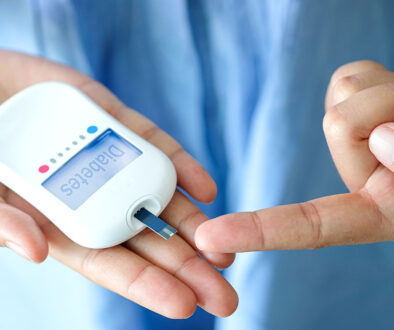What Are the Warning Signs of Diabetic Ketoacidosis?
If you’ve been diagnosed with diabetes, you should look for the warning signs of diabetic ketoacidosis? This is a serious disorder that can be life-threatening, and it’s imperative to have a comprehensive understanding of the condition. If you exhibit symptoms, you should get immediate medical treatment.
We’ll take a closer look at what diabetic ketoacidosis (DKA) is, its triggers and what are the red flags for DKA? More importantly, we’ll explain how to reduce your chances of getting it.
What Is Diabetic Ketoacidosis (DKA)?
Before we delve into the warning signs of diabetic ketoacidosis, let’s review the basics about this condition.
DKA is the result of a chain reaction that begins with a lack of insulin. When your body doesn’t have enough insulin, it cannot process sugar. Sugar is used for energy. As a result, your body starts to break down fat. By breaking down fat, your body releases ketones.
Ketones are produced whenever your body uses fat for energy. This can occur when you have a low-carb diet, and participate in extensive fasting or even do intense exercise. In the case of diabetes, ketones are released if there’s a problem with your insulin levels.
As a result, ketones make your blood acidic. If not treated in a timely manner, this can lead to:
- Impaired enzymes
- Muscle weakness
- Irregular heartbeats
- Confusion
- Disorientation
- Coma (in extreme cases)
What Are the Warning Signs of Diabetic Ketoacidosis?
Because DKA can quickly become serious and life-threatening if not treated, you need to know the warning signs. These include:
- Extreme thirst or dehydration
- Urinating more than usual
- Headaches
- Elevated blood sugar levels
If DKA progresses, the symptoms become more serious and severe. They can then include:
- Abdominal pain
- Nausea
- Fatigue
- Weakness
- Vomiting
- Confusion or disorientation
Those who have DKA also report having fruity breath odor.
What Triggers Diabetic Ketoacidosis?
Lack of Insulin
The main trigger for DKA is a lack of insulin. This can result from missing an insulin injection or skipping your medication. Eating a lot of carbs without adjusting your insulin dosage accordingly can also start diabetic ketoacidosis.
Illnesses
In addition, if you have infections or illnesses—such as UTIs or respiratory infections—your body will need more insulin. Failure to provide it can place you at risk for DKA.
Undiagnosed Diabetes
Did you realize that many people have undiagnosed diabetes and don’t even know it? If you’re not aware that you have this disease, then you can’t adjust your insulin levels accordingly. This is why it’s so important to maintain wellness appointments and have regular blood testing as part of your yearly physical.
Physical Trauma
Some have elevated blood sugar levels after they’ve experienced some kind of physical trauma. This may include surgery, an injury, some medications, or even the stressor of major life events.
At What Blood Sugar Levels Does Ketoacidosis Start?
First, you should realize that there is no one level that triggers ketoacidosis; the level may vary from person to person. However, in general, DKA begins when blood sugar levels exceed 250 mg/dL. There are other factors that determine the start of ketoacidosis, and blood sugar levels are just one of them. Others can include:
- Illness
- Infections
- Sensitivity to insulin
- Your overall health
How to Avoid DKA
Now that we’ve answered what are the warning signs of diabetic ketoacidosis, it’s time to look at ways to prevent it from happening.
Take Insulin as Needed and Directed
As we’ve mentioned above, one of the biggest factors hinges upon managing your insulin intake. Be sure to administer injections when needed, and don’t attempt to skip medication or dosages. When you have diabetes, constant vigilance is vital to remain healthy.
Monitor Ketone Levels
You can purchase testing strips that will let you know your levels of ketones. You can speak with your internal medicine physician in Cary about how to obtain some.
Healthy Eating
Make sure you are following a healthy diet, one that is properly balanced with protein, fats, and carbohydrates. Many quick, “on the go” foods are high in carbohydrates, which can help to contribute to imbalances in your blood sugar levels. Even when you are busy, take the time to eat something healthy!
Take Care of Yourself
Stress and illnesses can affect blood sugar. Therefore, be proactive with your health. Schedule regular wellness exams with one of our internal medicine specialists and make sure to keep all of your follow-up visits as recommended.
We’re Experts in Helping Our Patients Manage Diabetes
We’ve reviewed what are the warning signs of diabetic ketoacidosis? and we’ve mentioned ways to avoid it.
But our experience goes far beyond that.
As internal medicine physicians in Cary, we’re keenly aware of how all your body’s systems affect all aspects of your wellness. That’s why we’re an excellent choice for managing chronic diseases such as diabetes.
So if you need assistance with maintaining a healthy blood sugar level or if you’re just overdue for a yearly physical, we’d love to be your medical home. Please contact us to request an appointment.




